Abstract
The pentagastrin-tiotidine interaction has been analysed, using improved techniques, in the mouse isolated, lumen-perfused, stomach assay. For comparison and quantification of the H2-receptor blocking activity of tiotidine, histamine-tiotidine interactions have also been analysed in the mouse stomach and guinea-pig isolated right atrial preparation. Tiotidine behaved as a competitive antagonist of histamine both in the guinea-pig right atrium (pKB 7.57) and mouse stomach (pKB 6.96). The difference in pKB was attributed to the loss of tiotidine into the gastric secretion. On the stomach assay, pentagastrin concentration-effect curves were significantly flatter with lower maximal responses than those obtained to histamine. In addition the profile of inhibition observed with tiotidine was different in that the pentagastrin curve maxima were depressed with only a small concomitant dextrad shift. A mathematical model has been developed which accounts for the differences in agonist concentration-effect curves and describes in a quantitative manner the expectations for the competitive antagonism of endogenous histamine assumed to be released by pentagastrin. Fitting of the pentagastrin-tiotidine data to this model provided a reasonable goodness-of-fit. The results are discussed in terms of the role of endogenous histamine in gastrin-stimulated acid secretion. We conclude that the results are consistent with the hypothesis that pentagastrin stimulates acid secretion via the release of endogenous histamine under the present experimental conditions.
Full text
PDF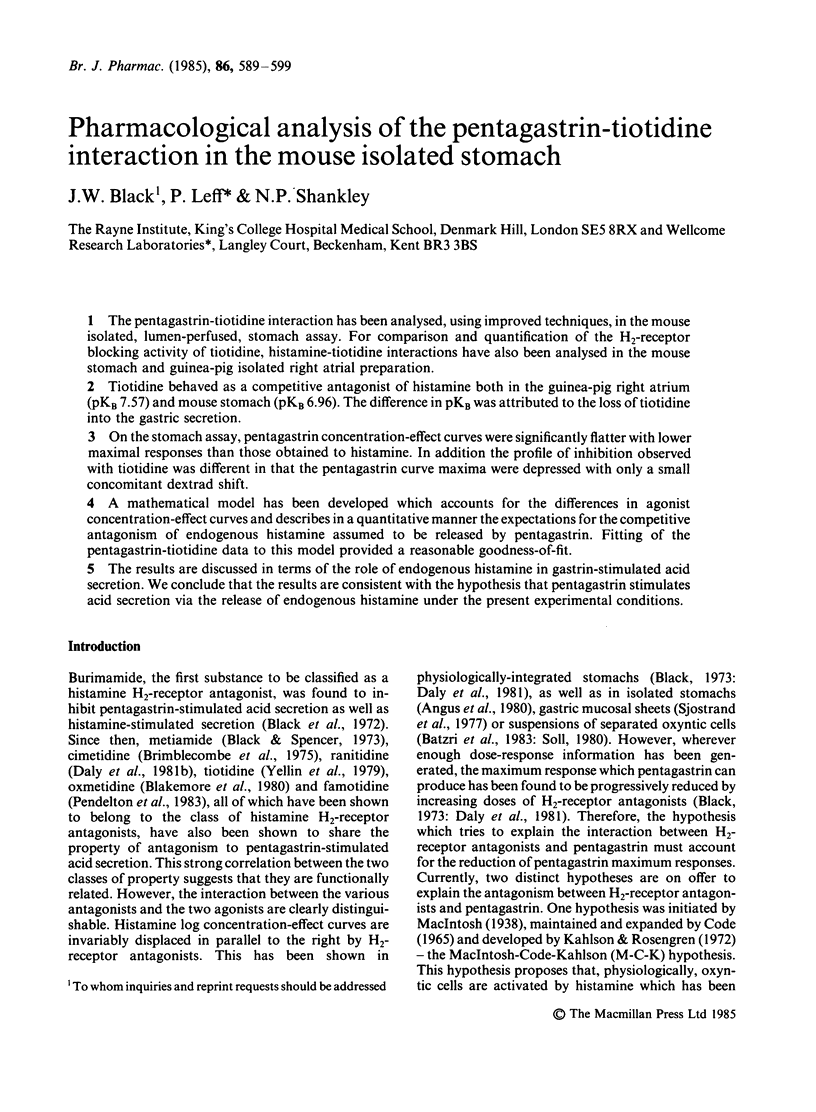
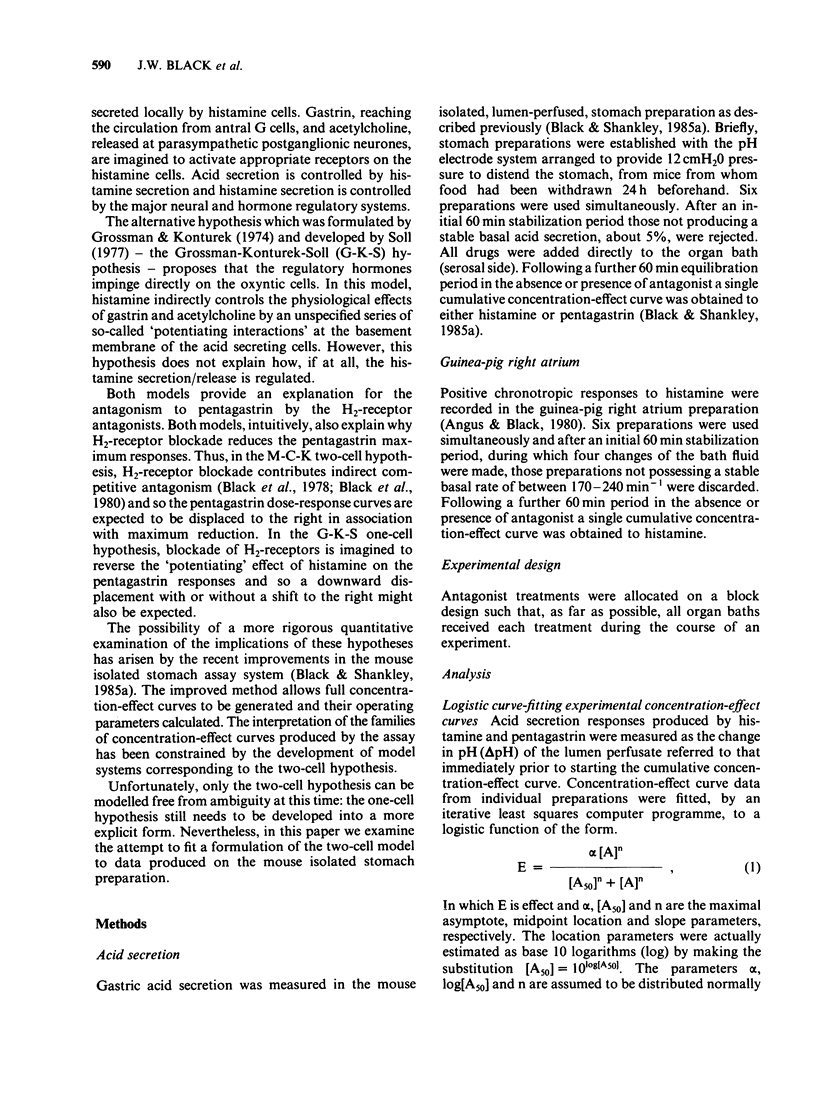
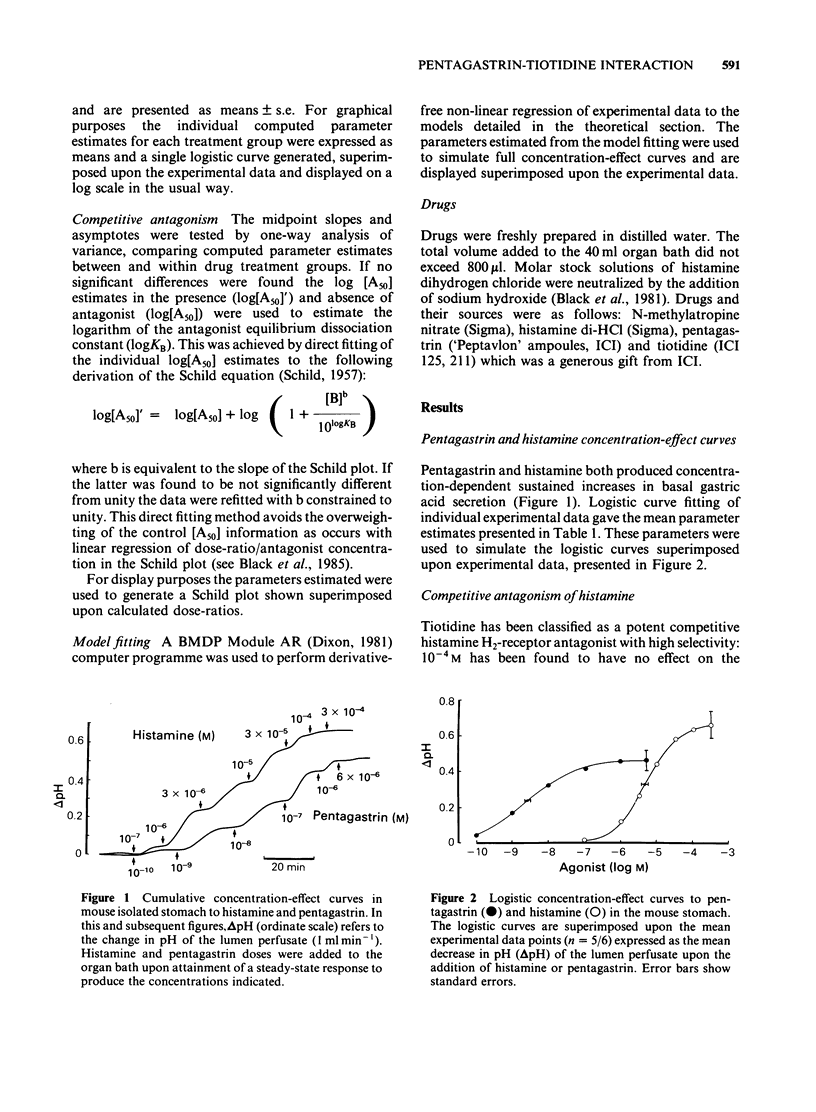
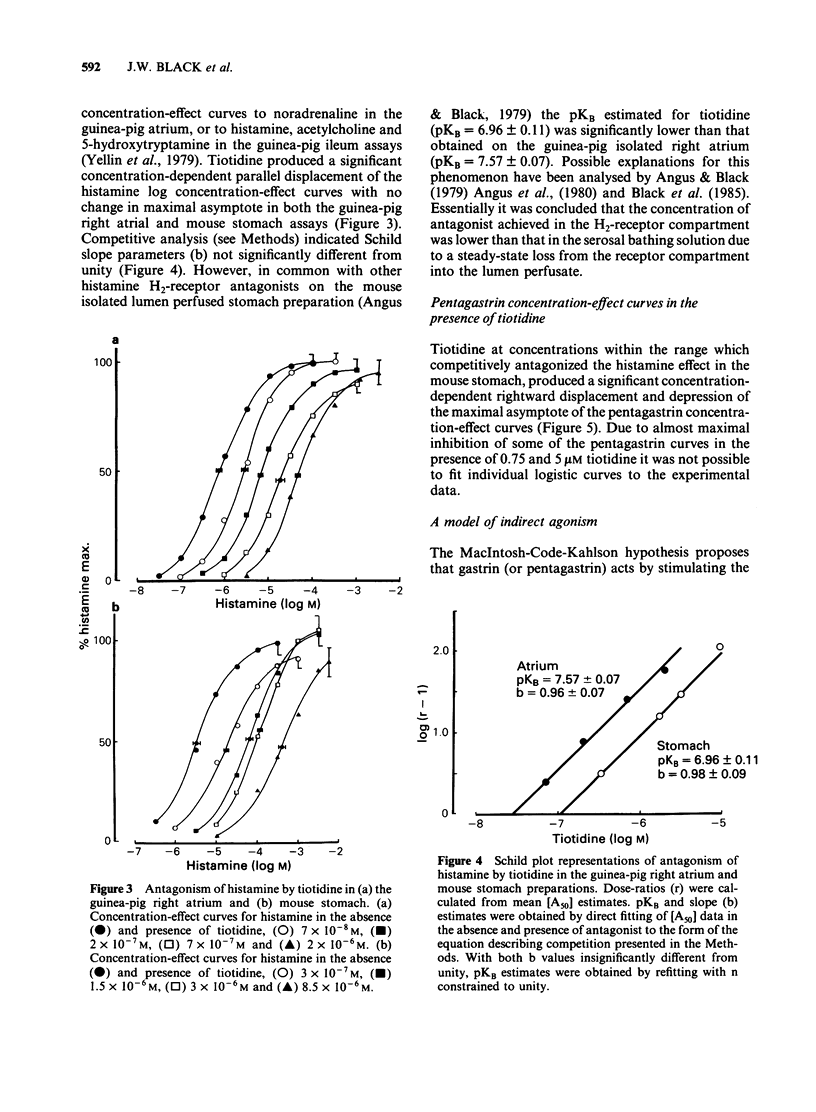
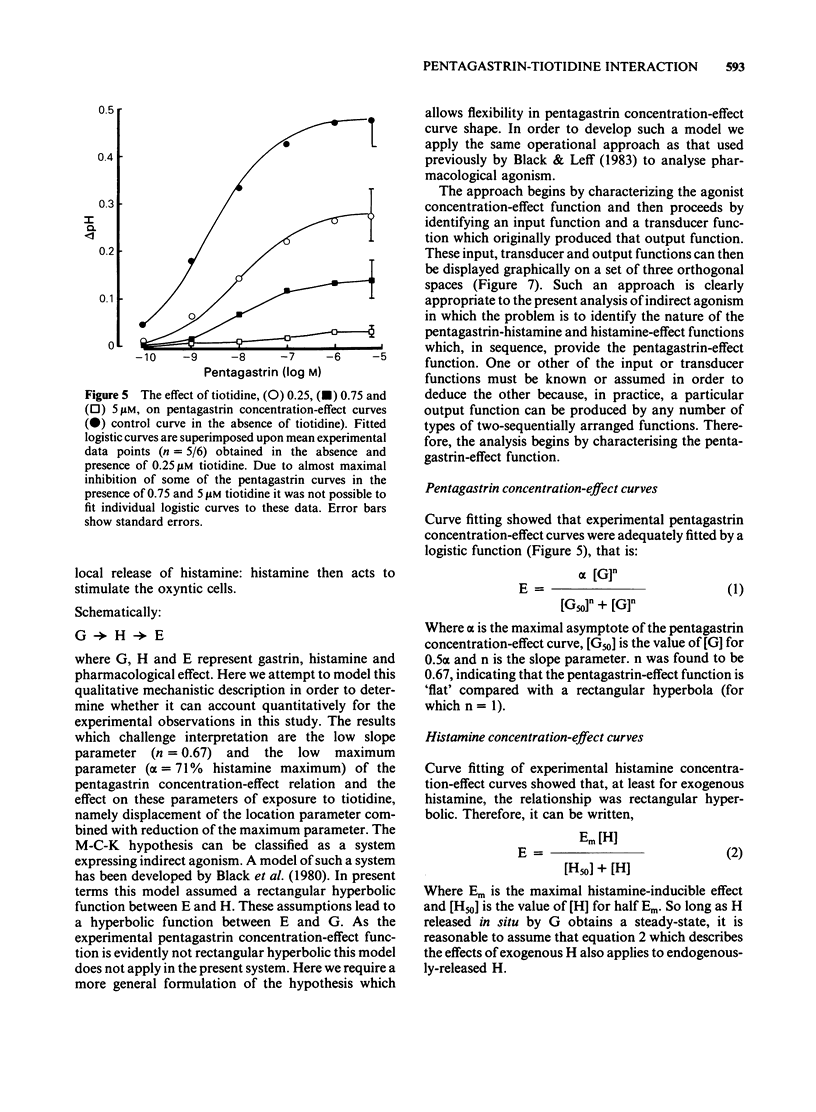

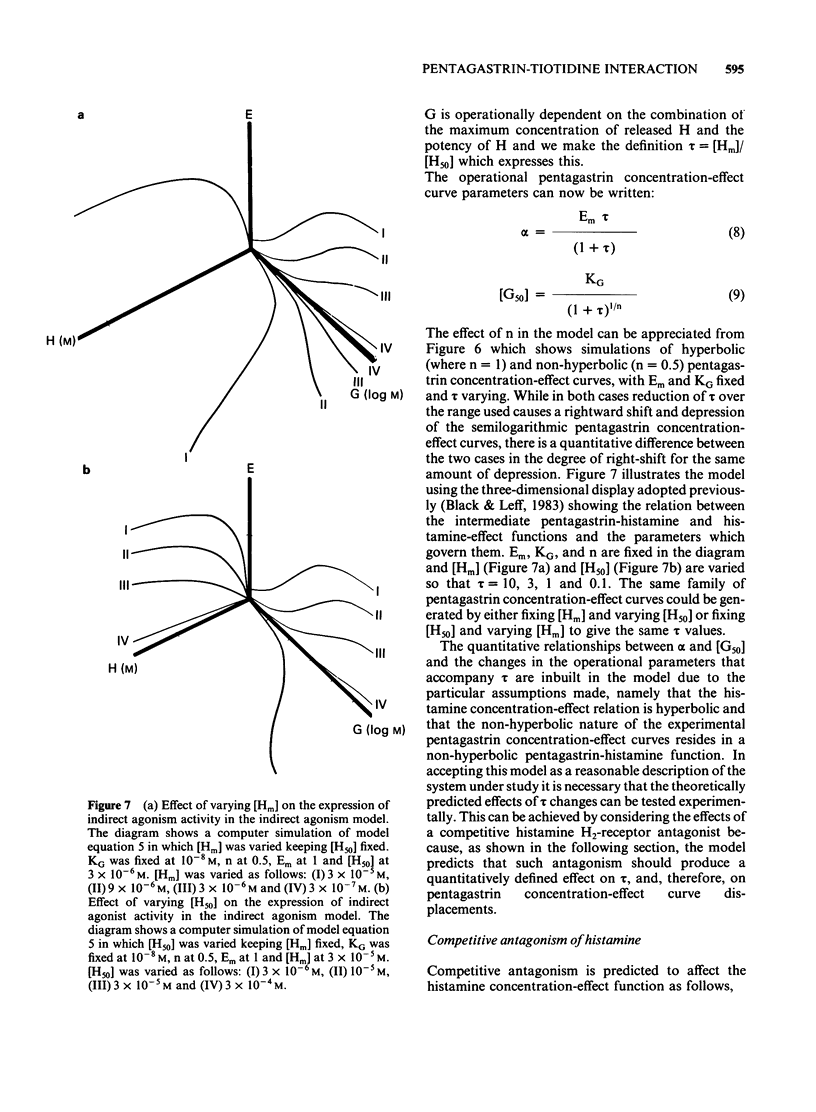
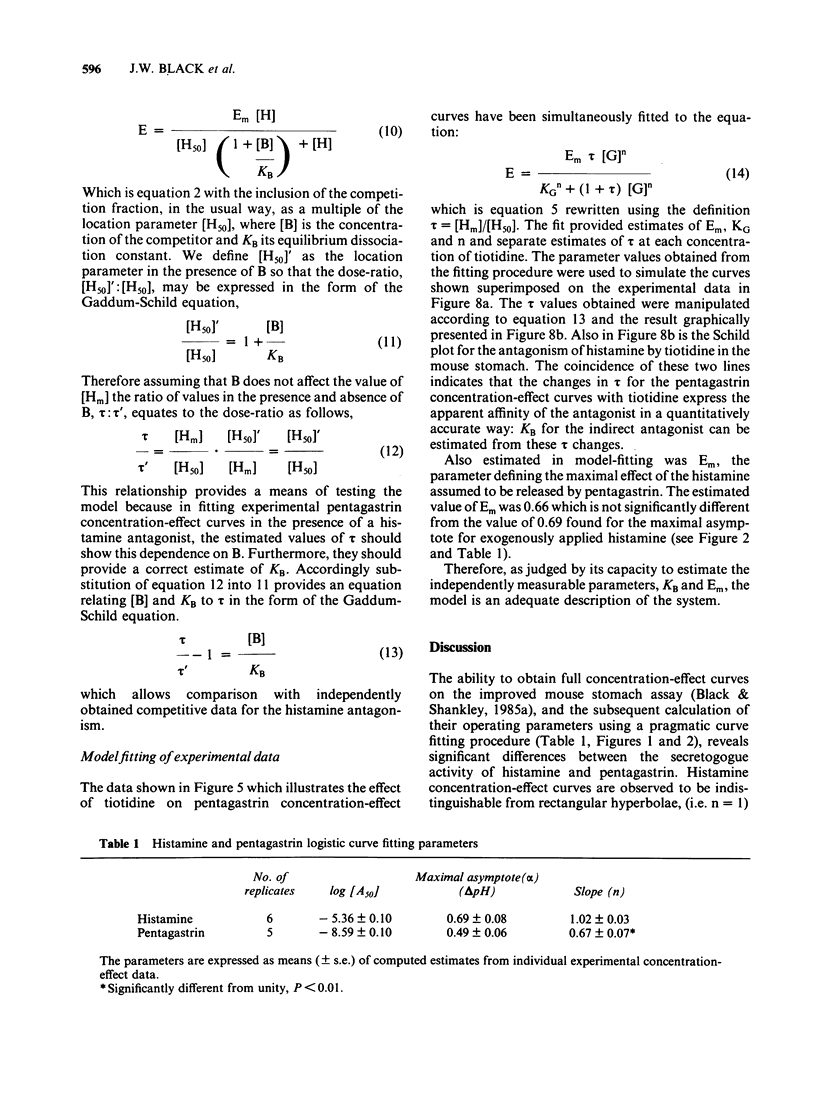
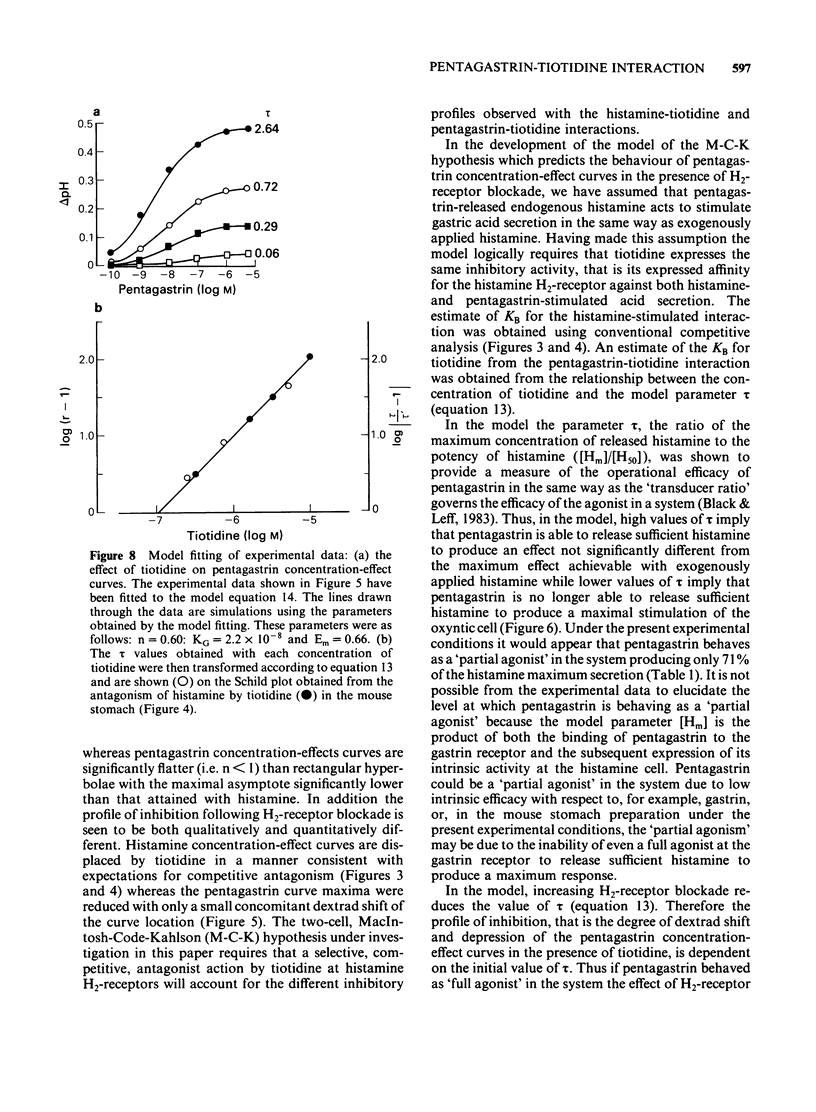
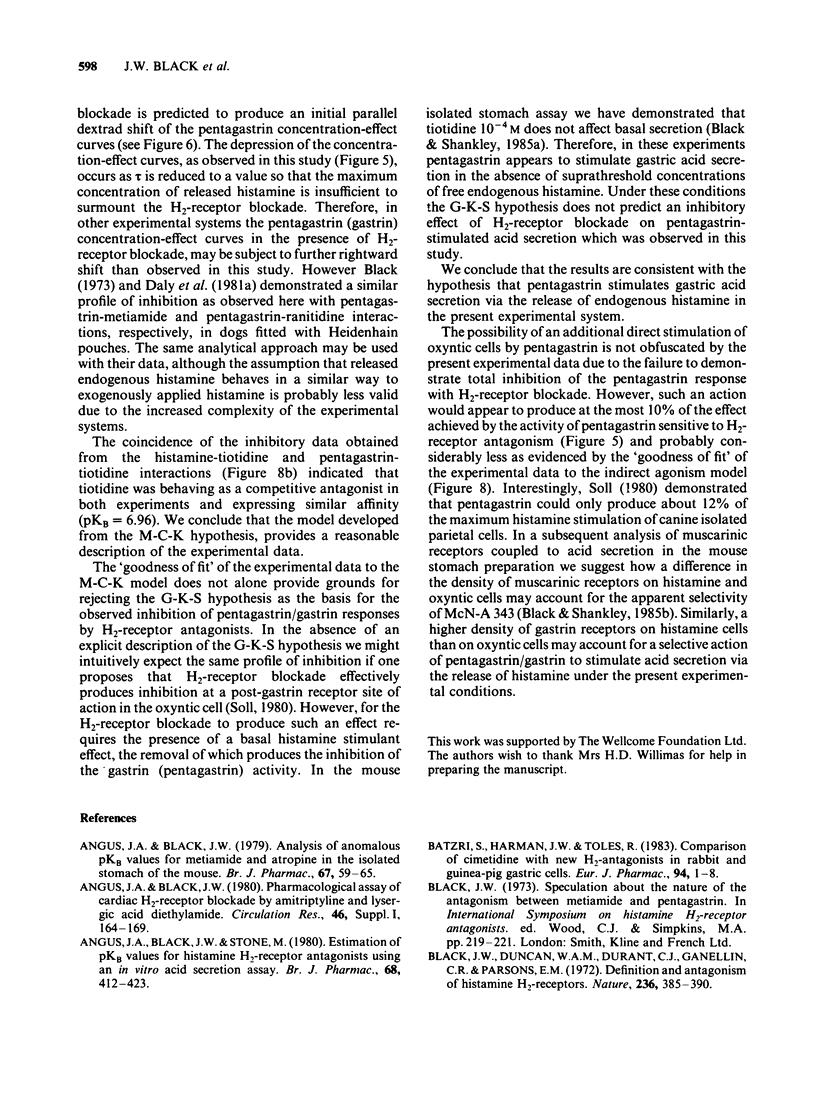
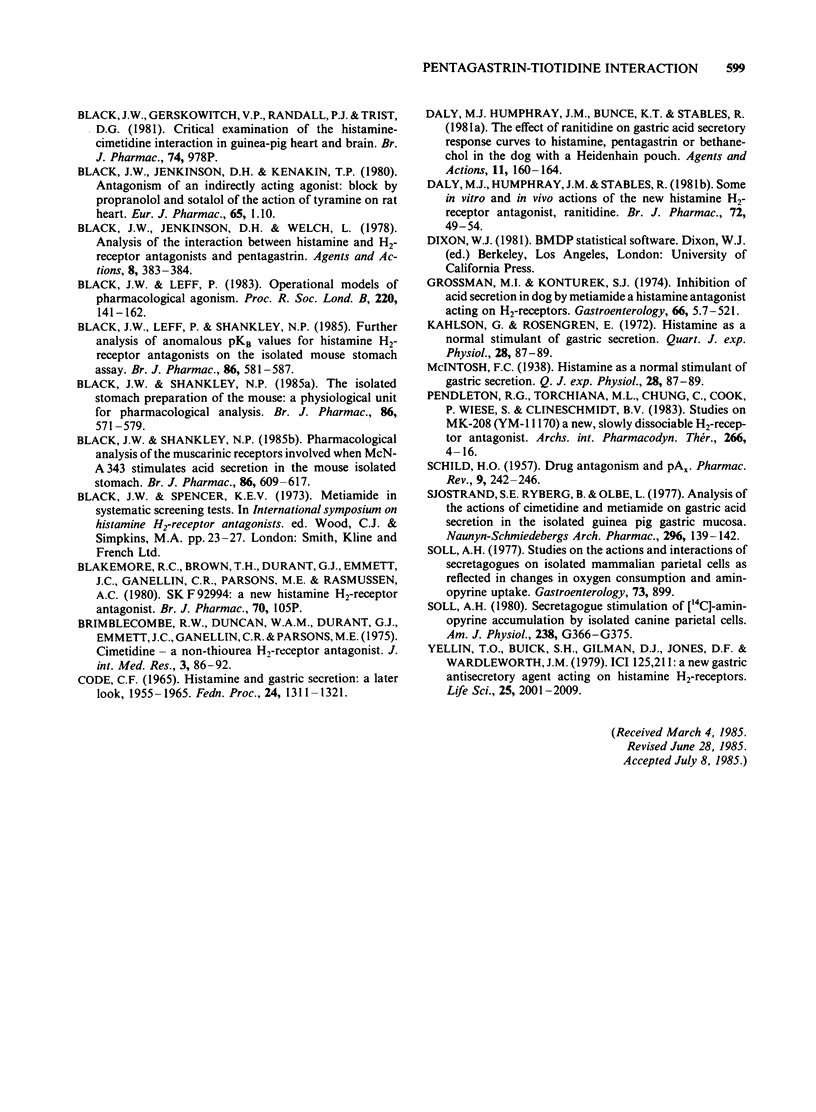
Selected References
These references are in PubMed. This may not be the complete list of references from this article.
- Angus J. A., Black J. W. Analysis of anomalous pKb values for metiamide and atropine in the isolated stomach of the mouse. Br J Pharmacol. 1979 Sep;67(1):59–65. [PMC free article] [PubMed] [Google Scholar]
- Angus J. A., Black J. W., Stone M. Estimation of pKB values for histamine H2-receptor antagonists using an in vitro acid secretion assay. Br J Pharmacol. 1980 Mar;68(3):413–423. doi: 10.1111/j.1476-5381.1980.tb14555.x. [DOI] [PMC free article] [PubMed] [Google Scholar]
- Batzri S., Harmon J. W., Toles R. Comparison of cimetidine with new H2-antagonists in rabbit and guinea pig gastric cells. Eur J Pharmacol. 1983 Oct 14;94(1-2):1–8. doi: 10.1016/0014-2999(83)90435-1. [DOI] [PubMed] [Google Scholar]
- Black J. W., Duncan W. A., Durant C. J., Ganellin C. R., Parsons E. M. Definition and antagonism of histamine H 2 -receptors. Nature. 1972 Apr 21;236(5347):385–390. doi: 10.1038/236385a0. [DOI] [PubMed] [Google Scholar]
- Black J. W., Jenkinson D. H., Kenakin T. P. Antagonism of an indirectly acting agonist: block by propranolol and sotalol of the action of tyramine on rat heart. Eur J Pharmacol. 1980 Jul 11;65(1):1–10. doi: 10.1016/0014-2999(80)90202-2. [DOI] [PubMed] [Google Scholar]
- Black J. W., Jenkinson D. H., Welch L. Analysis of the interaction between histamine H2-receptor antagonists and pentagastrin [proceedings]. Agents Actions. 1978 Jun;8(4):383–384. doi: 10.1007/BF01968624. [DOI] [PubMed] [Google Scholar]
- Black J. W., Leff P. Operational models of pharmacological agonism. Proc R Soc Lond B Biol Sci. 1983 Dec 22;220(1219):141–162. doi: 10.1098/rspb.1983.0093. [DOI] [PubMed] [Google Scholar]
- Black J. W., Leff P., Shankley N. P. Further analysis of anomalous pKB values for histamine H2-receptor antagonists on the mouse isolated stomach assay. Br J Pharmacol. 1985 Nov;86(3):581–587. doi: 10.1111/j.1476-5381.1985.tb08934.x. [DOI] [PMC free article] [PubMed] [Google Scholar]
- Black J. W., Shankley N. P. Pharmacological analysis of the muscarinic receptors involved when McN-A 343 stimulates acid secretion in the mouse isolated stomach. Br J Pharmacol. 1985 Nov;86(3):609–617. doi: 10.1111/j.1476-5381.1985.tb08937.x. [DOI] [PMC free article] [PubMed] [Google Scholar]
- Black J. W., Shankley N. P. The isolated stomach preparation of the mouse: a physiological unit for pharmacological analysis. Br J Pharmacol. 1985 Nov;86(3):571–579. doi: 10.1111/j.1476-5381.1985.tb08933.x. [DOI] [PMC free article] [PubMed] [Google Scholar]
- Code C. F. Histamine and gastric secretion: a later look, 1955-1965. Fed Proc. 1965 Nov-Dec;24(6):1311–1321. [PubMed] [Google Scholar]
- Daly M. J., Humphray J. M., Bunce K. T., Stables R. The effect of ranitidine on gastric acid secretory response curves to histamine, pentagastrin or bethanechol in the dog with a Heidenhain pouch. Agents Actions. 1981 Apr;11(1-2):160–164. doi: 10.1007/BF01991489. [DOI] [PubMed] [Google Scholar]
- Daly M. J., Humphray J. M., Stables R. Some in vitro and in vivo actions of the new histamine H2-receptor antagonist, ranitidine. Br J Pharmacol. 1981 Jan;72(1):49–54. doi: 10.1111/j.1476-5381.1981.tb09103.x. [DOI] [PMC free article] [PubMed] [Google Scholar]
- Grossman M. I., Konturek S. J. Inhibition of acid secretion in dog by metiamide, a histamine antagonist acting on H2 receptors. Gastroenterology. 1974 Apr;66(4):517–521. [PubMed] [Google Scholar]
- Pendleton R. G., Torchiana M. L., Chung C., Cook P., Wiese S., Clineschmidt B. V. Studies on MK-208 (YM-11170) a new, slowly dissociable H2-receptor antagonist. Arch Int Pharmacodyn Ther. 1983 Nov;266(1):4–16. [PubMed] [Google Scholar]
- SCHILD H. O. Drug antagonism and pAx. Pharmacol Rev. 1957 Jun;9(2):242–246. [PubMed] [Google Scholar]
- Sjöstrand S. E., Ryberg B., Olbe L. Analysis of the actions of cimetidine and metiamide on gastric acid secretion in the isolated guinea pig gastric mucosa. Naunyn Schmiedebergs Arch Pharmacol. 1977 Jan;296(2):139–142. doi: 10.1007/BF00508465. [DOI] [PubMed] [Google Scholar]
- Soll A. H. Secretagogue stimulation of [14C]aminopyrine accumulation by isolated canine parietal cells. Am J Physiol. 1980 Apr;238(4):G366–G375. doi: 10.1152/ajpgi.1980.238.4.G366. [DOI] [PubMed] [Google Scholar]
- Soll A. H. Studies on the actions and interactions of secretagogues on isolated mammalian parietal cells as reflected in changes in oxygen consumption and aminopyrine uptake. Gastroenterology. 1977 Oct;73(4 Pt 2):899–899. [PubMed] [Google Scholar]
- Yellin T. O., Buck S. H., Gilman D. J., Jones D. F., Wardleworth J. M. ICI 125,211: a new gastric antisecretory agent acting on histamine H2-receptors. Life Sci. 1979 Dec 3;25(23):2001–2009. doi: 10.1016/0024-3205(79)90604-0. [DOI] [PubMed] [Google Scholar]


